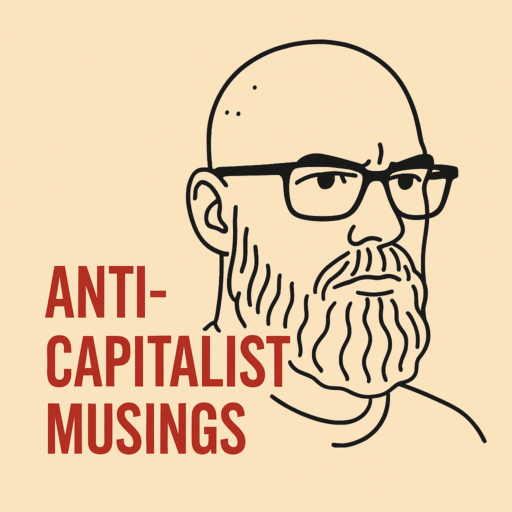Seymour’s article provides a piercing critique of the contemporary political and social climate, capturing how simmering racial anxieties and the myth of “ethnic decline” have been weaponised by far-right agitators. He reveals how these dangerous narratives have been legitimised and amplified by mainstream political discourse and the media.
The Influence of Far-Right Figures and Social Media
At the heart of this agitation are key figures like Tommy Robinson, whose history of far-right activism has made him a figurehead for those seeking to channel their anxieties into violence. Robinson, alongside incendiary voices like Andrew Tate, has expertly leveraged social media to stoke fears, transforming online disinformation into real-world violence. Since Elon Musk acquired Twitter, the platform has descended into a cesspool of far-right, racist, and extremist conservative voices. Many accounts that were previously banned (Alex Jones, former President Trump and of course Robinson) for promoting hate speech and disinformation have been reinstated under the guise of free speech. Meanwhile, Musk’s selective approach to free expression—imposing restrictions on words like “cisgender”—aligns with his ideological leanings. The culture war rhetoric that fuels division and hatred is now not only tolerated but actively amplified by Musk and Twitter’s (X’s) algorithm, further entrenching these toxic narratives in public discourse.
“Social media platforms have become breeding grounds for far-right rhetoric, amplifying hate and division across society.”
Media and Political Complicity
Seymour highlights the complicity of certain media outlets and political figures in spreading these harmful narratives. GB News, known for its populist slant, has often provided a platform for voices that echo these divisive views, normalising toxic discourse. Similarly, Nigel Farage and Richard Tice, both prominent figures associated with Reform UK (and unsurprisingly, GB News), have been instrumental in perpetuating the rhetoric of “broken borders,” “stopping the boats,” and the existential threat posed by immigration. Seymour identifies this rhetoric as central to the far-right’s narrative.
Dan Wootton, another internet shock jock trying to become the UK’s Alex Jones, injects Trumpian talking points into the UK conversation. His misunderstanding of “ANTIFA”—a diverse coalition of anti-racists, anti-fascists, trade unions, NGOs, and other left-wing groups united against fascism—shows how little he grasps the complexity of the issues he sensationalises. By mischaracterising “ANTIFA” as a violent force infiltrating protests, Wootton distorts reality to stir division. His use of phrases like “invasion of our southern border,” borrowed straight from Trumpian MAGA la-la land, highlights this effort to spread fear and misinformation.
The MSM and Britain's political elites don’t want to acknowledge the certain fact that the far left infiltrated the so-called "riots" sparked by the Southport Massacre.
— Dan Wootton (@danwootton) August 21, 2024
Both physically by hard left groups like Antifa and online using foreign bad actors, including in Pakistan. pic.twitter.com/Ul1tTpIVQb
“Media outlets and political figures are complicit in spreading the far-right’s divisive narratives.”
The influence of Lee Anderson, a Reform UK MP known for his provocative statements (who can forget when he told asylum seekers to “fuck off back to France”), and Suella Braverman, the former Conservative Home Secretary, along with her one-time minion at the Home Office Robert Jenrick (currently standing for leader of the broken Tory Party and still dog whistling to the far right and Reform UK’s reactionary base), cannot be overstated. Their language, often mirroring far-right talking points, blurs the line between legitimate political discourse and dangerous demagoguery. By tapping into the fears and prejudices of their base, they further entrench the ideologies that fuel these violent outbursts. The Telegraph, once a newspaper of record, now operates on the fringes of conspiracy (a print version of GB News if you like), often framing these narratives as part of a broader concern over national sovereignty and cultural identity.
Exploitation of the Working Class
Seymour’s article exposes how right-wing political figures have increasingly manipulated societal fears to further their own power. A particularly insidious tactic has been the exploitation of the working class, especially white working-class communities, to scapegoat other vulnerable parts of the population. This strategy serves as a convenient tool for politicians to direct frustration and anger away from themselves and towards migrants (or other parts of the community), a tactic deeply rooted in the same anxieties Seymour critiques.
Nigel Farage, a prominent figure in this movement (now an MP after his eighth attempt) and owner of his political party (with a little help from the wealthy), epitomises this exploitation. He has consistently stoked fears of immigration and foreign influence on crime in the UK, claiming to represent the working-class voters of his constituency and the country at large (the silent majority myth). Yet, Farage’s lifestyle is far removed from the struggles of the people he purports to champion—reportedly earning over £100k a month from his media appearances. His disconnect from the daily realities of his constituents is evident in his absence from Clacton, raising serious questions about his genuine commitment to the community.
A glorious day in Clacton!☀️ pic.twitter.com/GpM4uHIiTt
— Nigel Farage MP (@Nigel_Farage) August 21, 2024
Similarly, Richard Tice, deputy leader of Reform UK and now newly elected MP, positions himself as a defender of the working class (one seriously has to question the level of understanding public school boys have of the class they are taught to look down on) by railing against net zero policies. However, Seymour’s analysis of how right-wing figures manipulate public sentiment aligns perfectly with Tice’s actions; his party’s acceptance of donations from the fossil fuel industry exposes a blatant conflict of interest. Tice’s opposition to environmental policies is less about protecting the livelihoods of ordinary people and more about securing the profits of his wealthy backers, showcasing the same kind of cynical power grab that Seymour critiques.
This manipulation is not going to be limited to the scapegoating of migrants. Once this group has been effectively eradicated (The new Labour Government is already reshaping the hostile environment to appease the far-right), the focus will inevitably shift to other vulnerable communities. Those on benefits, the unemployed, the disabled, and the elderly will become the next targets, blamed for the nation’s economic and social issues, despite their minimal impact on such problems. Seymour’s argument that these outbursts of anger are less about genuine socio-economic grievances and more about preserving a crumbling hierarchy applies here as well—the real culprits are those in power who exploit these divisions for their own gain.
The rich politicians and media figures orchestrating this agenda (covered here by Sam Fowles writing in Prospect) have no skin in the game. They do not experience the daily struggles of those they claim to represent. Their wealth and privilege shield them from the precarious existence faced by millions of ordinary people. By sowing division and directing anger towards marginalised groups, they divert attention away from their own failings, much like Seymour’s critique of how these agitators perpetuate racial unrest. One only has to look at those who are now in prison or facing custodial sentences for the far-right violence of a few weeks ago to see a stark reality: it is not the social media figures, politicians, or journalists—those who have done the most to fan the flames of division—who are being held accountable. Instead, it’s the lumpen, often from already poor working class communities, who have been incited to violence and now bear the brunt of legal repercussions, while the true instigators remain unscathed and continue to profit from the chaos they’ve sown.
This strategy of scapegoating is not just about winning votes; it is about maintaining control. As Seymour points out, the perpetuation of toxic ideologies serves to entrench the power of those who benefit from societal divisions. By keeping the working class divided and distracted, these politicians and their allies ensure that the real sources of inequality—wealth concentration, corporate influence, and systemic injustice—remain unchallenged. The exploitation of the working class is not an accidental byproduct of right-wing populism; it is a deliberate tactic designed to sustain power while the true architects of inequality continue to thrive.
The Rise of Post-Modern Traditionalism
A fairly recent phenomenon in this landscape is the rise of “post-modern traditionalists,” epitomised by figures like Carl Benjamin (Sargon of Akkad). These individuals champion nativist and white Anglo-Saxon ideals, often invoking a nostalgic vision of society that lacks grounding in historical fact. They construct a romanticised past to advocate for traditionalist values, despite operating within a post-modern framework that typically challenges grand narratives and absolute truths. This juxtaposition creates an inherent contradiction, as they selectively deconstruct and reconstruct history to suit contemporary ideological agendas. By cloaking regressive ideas in sophisticated language, these so-called post-modern traditionalists seek to lend credibility to their views, attempting to influence “over the fence conversations.”
These traditionalist arguments often invoke a patriarchal and misogynistic vision of the past, glorifying an era where rigid gender roles and anti-abortion stances were the norm. They frequently support Christian fundamentalists’ right to silent prayer outside abortion centres and advocate for bans on abortion (of any type). Their regressive idealisation of history is deeply intertwined with a desire to return to a time when women had fewer rights and were confined to domestic roles. Such rhetoric not only marginalises women but also creates a slippery slope leading to the endorsement of figures like Andrew Tate, who espouse abhorrent views on women and gender relations. Tate’s toxic masculinity, with its emphasis on male dominance and the subjugation of women, is a natural extension of the patriarchal values—and the push to restrict women’s bodily autonomy—promoted by these traditionalist narratives.
“Post-modern traditionalists craft a romanticised past to push regressive ideals, distorting history for their agendas.”
The Cycle of Moral Panics and Societal Division
Seymour’s analysis is particularly effective in highlighting the cyclical nature of moral panics and the historical continuity of such episodes, drawing parallels between recent anti-immigrant riots in the UK and earlier instances of racially motivated violence worldwide. His argument that these outbursts are less about genuine socio-economic grievances and more about a desperate attempt to preserve a crumbling racial and national hierarchy is both compelling and chilling.
“The cycle of moral panic is a recurring symptom of a society struggling with its identity.”
Moral panics in the UK increasingly mirror those in the United States, with recent attempts to stoke fear over LGBTQI education and Critical Race Theory in schools. These manufactured crises have even extended to efforts to ban certain books in libraries, under the guise of protecting children or preserving traditional values. Such actions are part of a broader strategy to inflame cultural divisions and distract from more pressing societal issues. By stoking fears around these topics, far-right agitators and complicit media figures attempt to rally support for their regressive agendas, further polarising the public and undermining the principles of education and free expression.
Seymour’s critique of the liberal establishment’s response to these events—wherein they either misdiagnose the root causes or dismiss them as mere aberrations—underscores a fundamental failure to confront the deeper, structural issues at play. The media’s role in this, as he points out, is particularly damning. By normalising racist discourse under the guise of addressing “legitimate concerns,” they inadvertently (or perhaps deliberately) provide a veneer of respectability to these violent outbursts.
Seymour rightly insists that the left must not reduce these riots to “distorted expressions of material interests,” as the underlying motivations are far more complex and entwined with a perceived loss of racial status, which cannot be simply addressed by improving economic conditions. His call for a more nuanced understanding of how race and class intersect in these moments of crisis is a vital reminder that we must not overlook the potent force of racial identity in shaping political behaviours and outcomes.
Ultimately, Seymour’s article serves as a stark warning. The recent riots are not isolated incidents but symptoms of a deeper malaise within British society—one exacerbated by years of divisive rhetoric from both far-right extremists and the political mainstream. The fantasy of “white extinction” he describes is not merely a fringe belief; it is creeping into the centre of political discourse, threatening to reshape the very fabric of British identity. It is a call to action for those who wish to resist this tide, to confront these toxic ideologies head-on before they become even more entrenched.
“Ultimately, Seymour’s article serves as a stark warning. The recent riots are not isolated incidents but symptoms of a deeper malaise within British society—one exacerbated by years of divisive rhetoric from both far-right extremists and the political mainstream”
The agitators—ranging from social media figures like Robinson (a recent absconder from justice) and Tate (arrested again) to media outlets like GB News, and politicians like Farage, Tice, Anderson, and Jenrick—play a critical role in perpetuating the racial unrest Seymour dissects. Their influence, amplified by platforms such as X, Facebook, the Daily Mail, Talk, and The Telegraph, must be recognised as central to the current crisis. Seymour’s article not only diagnoses the problem but challenges us to address these actors directly to prevent further descent into violence, chaos and division.
Alexander Dugin (11) Artificial Intelligence (11) Book Review (93) Books (97) Britain (85) Capitalism (10) Conservative Government (36) Creeping Fascism (13) Crime and Punishment (14) diary (11) Donald J Trump (66) Europe (12) European Union (10) Far Right Extremism (15) Fascism (12) Film (13) France (16) Gaza (22) History (12) Imperialism (23) Israel (23) Keir Starmer (15) Labour Government (57) Labour Party (10) Migrants (23) Nigel Farage (24) Palestine (18) Protest (18) Reform UK (35) Russia (23) Television (10) Ukraine (12) United States of America (107) War (26) Work (12)





Leave a Reply